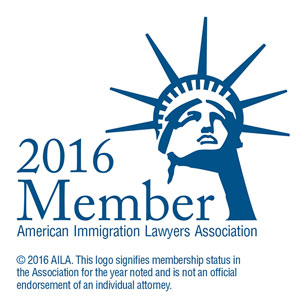Assault On Battered Immigrants: HR 4970 Undoes VAWA Protections and Risks Lives
By Myriam Jaidi
“This will get people killed,” my colleague and I agreed while we reviewed the “Immigration Provisions” of HR 4970, the bill introduced in the House in April, ostensibly to “reauthorize” the Violence Against Women Act (VAWA) originally promulgated in 1994 and reauthorized and strengthened since its original passing. The Immigration Provisions found in Title VIII of HR 4970, however, will effectively dismantle VAWA as we know it in the immigration context, place people in danger, set up a system that will likely violate the United States’ treaty obligations, and reverse decades of progress in the nation’s understanding of domestic violence and the pernicious ways in which an abuser can exercise power and control in domestic relationships. Overall, HR 4970 undermines the central goals of VAWA: protecting victims of domestic violence and other crimes and assisting law enforcement with the protection of victims, and the investigation and prosecution of crimes. If passed, it would also pull VAWA relief out of the paradigm governing all other forms of humanitarian relief in the immigration context.
The risks run high and tempers hot in the context of domestic violence or other types of abusive relationships – such as trafficker to trafficking victim, criminal to crime victim. Men and women come to us for help in our capacity as immigration lawyers – it is important to recognize that although the law is called the Violence Against Women Act, it helps all victims regardless of whether they are male or female, and we have seen many cases of men being abused either in marital relationships or other contexts. Clients who come to us have been traumatized and are deeply fearful of further abuse and retaliation from their abuser for their daring to seek help and to escape the abuser. They fear that the fact of submitting an application will lead to discovery and place them in grave danger. And they are fearful of law enforcement and concerned that instead of being protected for coming forward, they will be removed from the United States, perhaps sent back to a place where abusers or their family members will have free reign to harm them.
Congress recognized a long time ago that immigrants are a particularly vulnerable group when it comes to relationship dynamics because they are at a disadvantage – their ability to obtain a green card requires sponsorship. Thus, the person seeking status is, until the end of the process, until the green card has been delivered, subject to the will of the sponsoring United States citizen (USC) or lawful permanent resident (LPR). Congress created the self-petitioning process “so that the battered alien can seek status independent of the abuser.” Paul Virtue, Acting Executive Associate Administrator, Non-Disclosure and Other Prohibitions Relating to Battered Aliens: IIRIRA § 384 (May 5, 1997).
Given the draconian provisions of the bill, discussed below, the drafters of HR 4970 appear to be operating on the unfounded assumption that fraud is rampant in the VAWA self-petition context. This has not been our collective experience at CDMA nor have we heard anecdotally that fraudulent self-petitions have been routinely approved. To the contrary, our experience shows that the VAWA Unit at the United States Citizenship and Immigration Services (USCIS) Vermont Service Center (VSC) is extremely well trained and carefully adjudicates VAWA self-petitions, issuing requests for evidence and/or notices of intent to deny in cases where an applicant has not provided sufficient proof of eligibility and denying cases where applicants ultimately are unable to demonstrate by a preponderance of the evidence that they are eligible for deferred action under the law.
HR 4970 changes all aspects of a VAWA self petition, taking this form of affirmative relief out of the paradigm governing other forms of affirmative, humanitarian-based forms of relief, and converting the process into a trial of the VAWA self-petitioner. Title VIII of HR 4970 jettisons the long-standing standard of proof in VAWA self-petitions. The Immigration and Nationality Act (INA) does not provide for a standard of proof for VAWA self-petitions, therefore pursuant to Matter of Chawathe, 25 I&N Dec. 369 (AAO 2010) a VAWA self-petitioner “must prove by a preponderance of evidence that he or she is eligible for the benefit sought.” In assessing whether an applicant has met this burden, INA § 204(a)(1)(J) provides that in adjudicating a self-petition, the Department of Homeland Security (DHS) “shall consider any credible evidence relevant to the petition” and DHS has discretion to determine what evidence is credible and how much weight to give the evidence. Moreover, the rules governing the process provide that a petition may not be denied solely on the basis of information provided by the abuser or a member of the abuser’s family living in the same household as the victim. See 8 USC § 1367(a). Any derogatory information must be independently corroborated. Also, violations of the confidentiality provisions can result in disciplinary action or civil penalties up to $5,000. See 8 USC § 1367(c).
Congress set the standard of proof as it did, precluded dependence on information provided by the abuser, and created strict confidentiality standards based on the established need to protect applicants from being located by an abuser or subjected to retaliation and further abuse. People do in fact get hurt and even killed in these situations. Because of that fact, the protections for applicants under VAWA, especially the confidentiality protections as promulgated in 1996, have been crucial to the central goals of VAWA and therefore strengthened with each subsequent reauthorization of VAWA to date (2005 and 2011).
HR 4970 would impose a “clear and convincing” evidence standard and dismantle the confidentiality provisions, replacing them with a perverse situation in which power over the application submitted by a battered spouse is effectively handed back to the abuser. The clear and convincing evidence standard is a very high standard, far above the default preponderance of the evidence standard applicable to most immigration petitions, whether business or family based. Even individuals in removal proceedings attempting to show that a mandatory ground of denial of an application for relief do not apply to them, carry only the burden of proving by a preponderance of the evidence that the grounds do not apply. 8 C.F.R. § 1240.8(d). Thus a battered spouse faces a higher standard of proof in an affirmative application process under HR 4970 than an individual in removal proceedings attempting to overcome evidence that he has committed a particularly serious crime or presents a danger to the security of the United States!
Moreover, the protections of applicants for asylum are not granted to VAWA self-petitioners under HR 4970. HR 4970 provides that upon filing, a VAWA case will be transferred to a local service center for adjudication and that an officer “shall conduct an in-person interview of the alien who filed the petition” and “may also gather other evidence and interview other witnesses, including the accused United States citizen or lawful permanent resident, if they consent to be interviewed.”
The government and the advocacy community have learned over decades how important confidentiality is to victim safety. As recognized by the White House in a recent blog, “the risks of serious injury and homicide increase when a victim is taking steps to leave an abusive relationship,” a central basis for the confidentiality provisions of VAWA. Confidentiality is a long-standing, crucial component of humanitarian forms of relief. For example, in the asylum context, confidentiality is paramount and it is unthinkable to ask the abuser for input on the persecution of the asylum applicant. Title 8, Code of Federal Regulations (CFR) section 208.6 provides that
Information contained in or pertaining to any asylum application, records pertaining to any credible fear determination conducted pursuant to § 208.30, and records pertaining to any reasonable fear determination conducted pursuant to § 208.31, shall not be disclosed without the written consent of the applicant, except as permitted by this section or at the discretion of the Attorney General.
In the asylum context, confidentiality is considered breached when information contained in an asylum application is disclosed to a third party such that the third party can “link the identity of the applicant to: (1) the fact that the applicant has applied for asylum; (2) specific facts or allegations pertaining to the individual asylum claim contained in an asylum application; or (3) facts or allegations that are sufficient to give rise to a reasonable inference that the applicant has applied for asylum.” Joseph E. Langlois, Director, Asylum Division, Office of Refugee, Asylum, and International Operations, USCIS Interoffice Memorandum, Fact Sheet on Confidentiality (June 15, 2005). That is a significant protective regime founded on a compelling logic: “Public disclosure of asylum-related information may subject the claimant to retaliatory measures by government authorities or non-state actors in the event that the claimant is repatriated, or endanger the security of the claimant’s family members who may still be residing in the country of origin.” Id.
The rationale behind the VAWA confidentiality provisions are similarly rooted and make sense in the context of the significant risks faced by battered individuals and the purpose of VAWA: to allow battered immigrants “to leave their batterers without fearing deportation.” Violence Against Women Act of 1993: Summary and Purpose, H.R. Rep. No. 103-395, at 25 (1993). Congress developed the existing confidentiality measures to protect victims of domestic violence from being tracked down by their abusers for retaliation and continued abuse. These provisions are crucial to breaking the cycle of power and control that is the crux of domestic violence, and essential to bringing immigrant victims out of the shadows. Experience bears out the fact that whether or not the petitioning individual lives with his or her abuser the possibility that the abuser will be contacted about the application puts the individual in danger. Clearly, HR 4970 makes a mockery of the important protections and undermines them by providing that “all credible evidence submitted by an accused [USC or LPR] . . . shall be considered.” HR 4970 strongly implies that the abuser has to be given notice of the application, as the only way an investigation may be done is if the abuser is contacted and asked to participate. This should simply not be allowed. People will be killed as a result of a measure like this.
The bill’s use of the term “the accused” in reference to the abuser is completely inappropriate and highlights the fact that the bill shifts the inquiry from a victim-centered assessment of eligibility to a trial of the victim, shockingly taking a defensive stance in favor of the abuser, with the presumption being that the applicant is lying. Other fora already exist in which “the accused” can have his or her day in court such as divorce court, criminal court, family court, or civil court. Disputes between individuals can be weighed in all of these fora. But the self-petition process should not be a trial and is not intended to be adversarial. Furthermore, as noted above, there is extensive documentation of the fact that victims are afraid to come forward and press charges against their abusers specifically because they fear retaliation meted upon them or their children and other loved ones.
Another deeply troubling aspect of the bill is the proposed dismantling of the VAWA Unit at the USCIS Vermont Service Center. The VAWA Unit has amassed 12 years of specialized experience in adjudicating VAWA self-petitions and officers there receive extensive training on how to assess applications, uncover fraud, and properly determine an applicant’s eligibility under the law. Dismantling this unit in favor of local adjudication would be a huge waste of money and undermine the purpose of VAWA.
HR 4970 adds other obstacles to the process by requiring a stay of adjudication “if an investigation or prosecution is pending” and directing the adjudicating officer to consider the fact that “no investigation has been undertaken or if a prosecutor’s office has not commenced a prosecution after the matter was referred to it . . . .” No acknowledgement is made of the legion reasons why a case might not be prosecuted even after it commenced, including prosecutorial discretion, limited resources, a victim being threatened by the abuser that his or her cooperation will lead to retaliation by the abuser, or a combination of factors. In the U visa context, a prosecutor will sometimes decide not to issue the required U visa certification to the victim who needs it to apply for a U visa, if there is to be a trial in a criminal case, until the trial is completed. This is done for various reasons, the central one being so that the defense cannot use the fact of the certification to impeach the victim’s testimony or to ensure cooperation of the witness at trial. However, the key distinction is that in one case the prosecutor is exercising her discretion whereas in the other, the prosecutor’s discretion does not come into play in a meaningful way. HR 4970 makes the decision for the prosecutor – and stalls a case if a prosecution ensues or paints a case with a negative brush if a prosecutor decides not to proceed.
Another highly disturbing component of the bill is the mandated denial of a petition and expedited removal of an applicant “upon receiving any evidence of any material misrepresentation on a petition . . . .” The evidence need not be credible. The misrepresentation need not be knowing or willful. Thus a simple mistake of fact on the part of the applicant leads to draconian results including not only denial of the petition, but being processed for expedited removal and being barred from eligibility for any other form of relief. This provision could potentially come into direct conflict with the United States’s treaty obligations, such as those imposed by Article 3 of the Convention Against Torture, which prohibits the United States from returning an alien to a state where there are substantial grounds for believing that the individual would be subjected to torture.
This bill effectively represents throwing decades of research and aggregated knowledge about domestic violence out the window and constitutes an abuser’s dream codified and approved by the federal government. And no wonder. The Huffington Post discovered one of the driving forces behind HR 4970 is the head of a mail order bride service. A federal jury awarded one of the brides her company matched with an abusive American husband $434,000 after a trial. The verdict was affirmed upon appeal by the United States Court of Appeals for the Fourth Circuit. Go figure.




